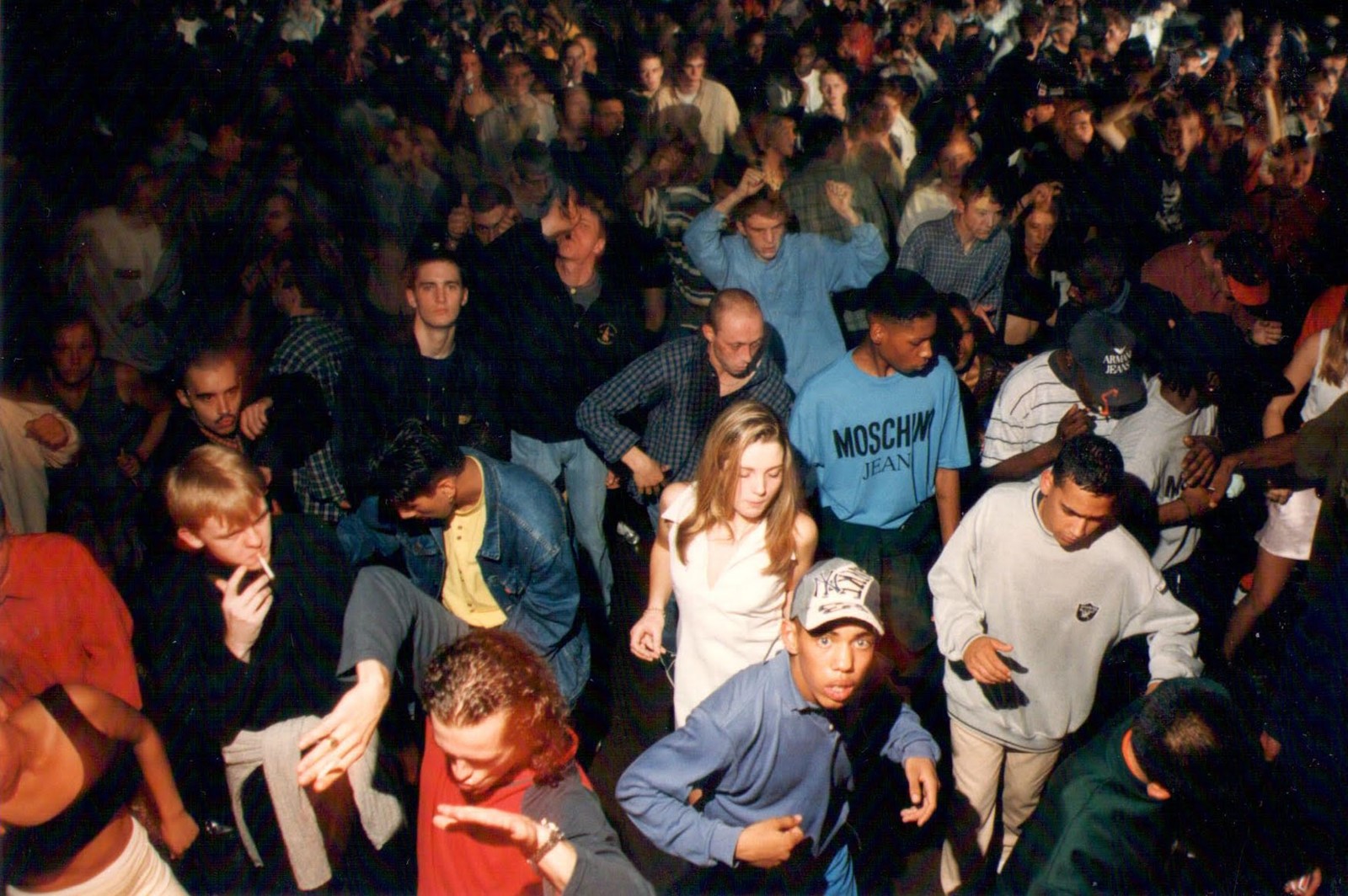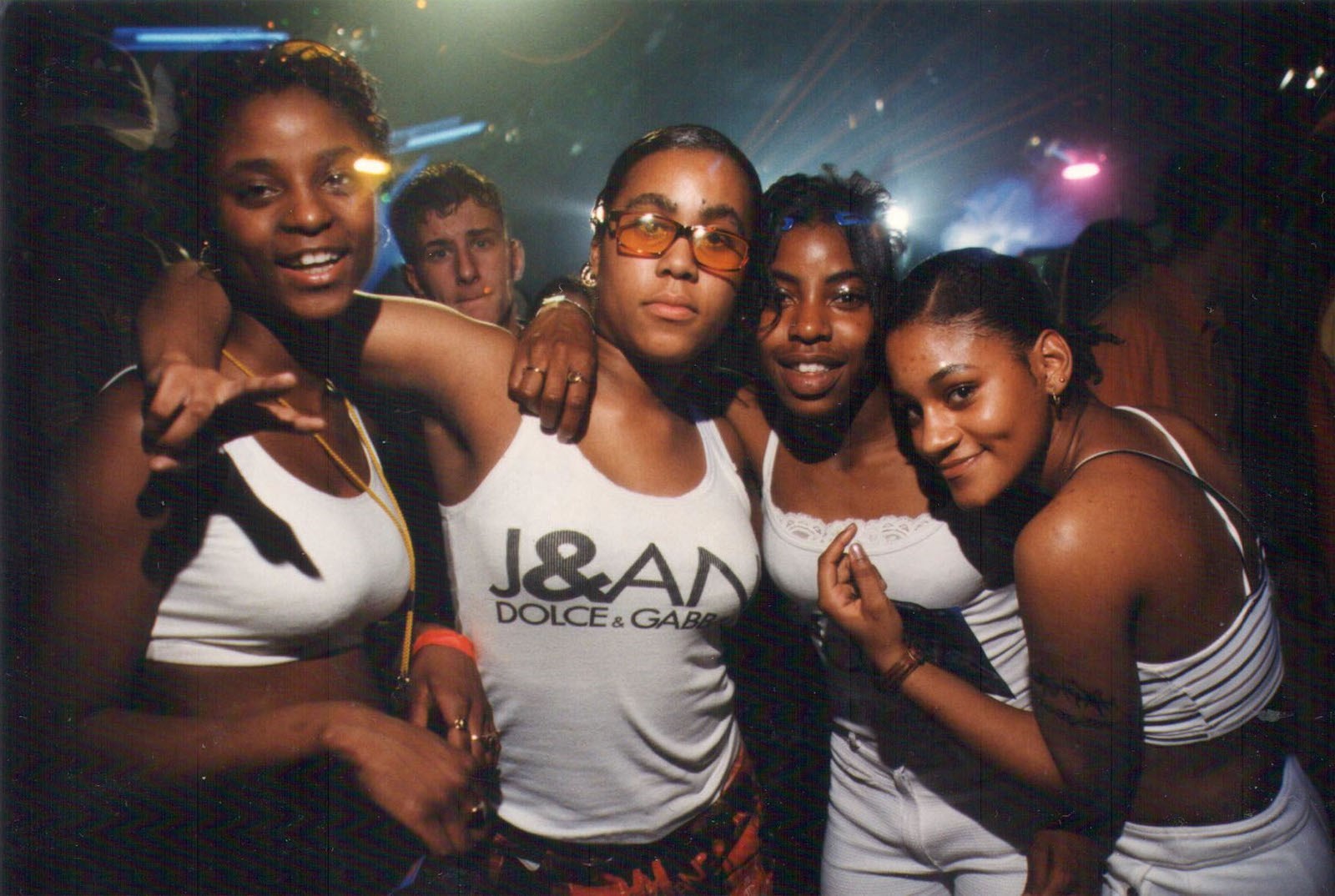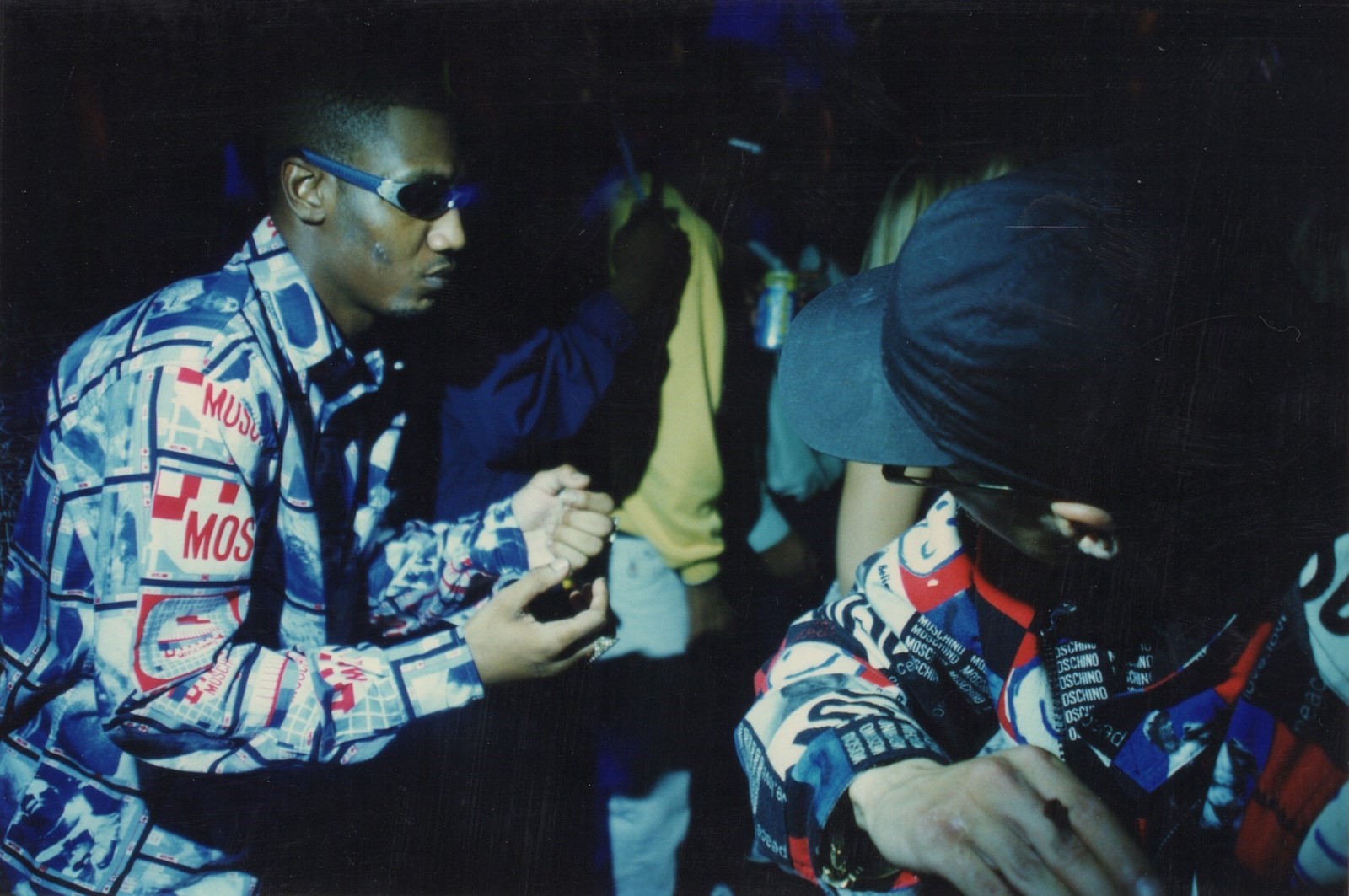Most people will say that London’s nightlife was far better back in the day. Which day that was remains to be decided on, but the club nights of the latter half of the 1990s, when the delirious sounds of jungle, a frenetic genre-blend of hip-hop, reggae and old school hardcore first emerged, must surely be a strong contender.
Jungle music, and its famously obsessive devotees, made for a subculture all of their own – defined not only by the music, but the clothes that they wore, an ecstatic co-option of flashy, logo-heavy Italian labels blended with the slack silhouettes and electric colours of 1980s rave. This is the subject of a new series of exhibitions, RTRN II JUNGLE, led by Saul Milton (the ‘Chase’ half of drum and bass duo Chase & Status) and curator Tory Turk that traces the culture of jungle and the fashions it spawned.
The first of these exhibitions – a “taster”, as the pair call it – is Super Sharp, taking place at London’s Fashion Space Gallery. It centres around Milton’s collection of archive Moschino, which is, by all accounts, the largest in Europe. “I’m telling you, this is 16 pieces here, we’ve got another 1486 ready to display,” he says, signalling at the eight-or-so looks hung to touch, outside of Perspex or glass, in the exhibition. “This is just a smidgen.”

Eventually all of those pieces, all 1500 of them, will be shown together when the series culminates – that is, when Turk and Milton find a space big enough to display them all. For the moment, they are stored in Milton’s spare bedroom. “I’ve just had a second daughter, I’ve two under two, so now the clothes need to go somewhere, because both of my daughters need the room,” he laughs. “Hopefully they’ll find their way into the other exhibition, and I’ll have to cross that bridge when I come to it.”
The idea for RTRN II JUNGLE first came when Turk curated another exhibition of street style, 89:14 A Street Style Story, in east London back in 2014. “I got various people to style different mannequins, and Saul styled the jungle mannequin,” Turk says. “It was a head-to-toe Moschino look, and then Saul told me about his collection, which was at that point like a thousand-plus.”
“What better way showing people ‘I’m doing alright’ than that massive medusa on your back from Versace, or some crazy, patterned Moschino?” – Saul Milton
They are clothes that Milton originally bought simply to wear. “This is pretty surreal for me, these are just my smelly clothes,” he laughs. “I wear everything. You know, it’s hard to put into words. Lots of these clothes weren’t meant for the streets of London. They were meant for the catwalks of Milan, for rich Italian women and men.”
In the 1990s, those clothes became part of a code, a semiotics of dress that signified to those in the know that you were part of the scene. The pieces on display here are demonstrative of just that – one Moschino shirt is boldly emblazoned with bright red lips; another, a matching set of shirt and trousers and one of Milton’s favourite pieces, is entirely covered with the Moschino logo in fading gradient text. To the untrained eye, they were bold fashion statements – to those within the moment, they told a story about who you were and what you could afford.

“Jungle style was all about the expensive clothes. So the way to show how expensive they were is for them to have logos,” says Turk. “It wasn’t just Moschino, it was obviously Versace, Iceberg, Armani – mainly Italian brands but also Stone Island and some Burberry, I mean, there were all of these very obvious designer labels, so that people really knew how much money you spent.”
“What better way off showing people ‘I’m doing alright’ than that massive medusa on your back from Versace, or some crazy, patterned Moschino?” Milton agrees. “For me, when I fell in love with jungle, I went from being a Freshjive, Quiksilver, DC shoes-wearing skater kid overnight to Versace jeans, Moschino shirt, shaved head, Gucci loafers. It was everything about it, it just had a certain style, a certain swag to it.”
It’s a style that has, in the last couple of years at least, been co-opted by modern fashion, with many brands embracing their iconic logos and monograms (or in the case of Burberry their famous plaid) as status symbols once again, this time for a new generation of teens who wield their spending power on Instagram.
“It is definitely different,” says Turk. “It’s played out on social media, and not so much played out in clubs. It’s just a completely different kind of digital environment to this to the club roots that it came from.”

Does it bother Milton that the style of his own youth is coming back around? “I love it. Back then we appropriated Italian fashion,” he says, “and we flipped it and we twisted it and we tapered it and we tailored it and we weeded it out and we changed it up, and we made it our own. 2018, the kids are doing it themselves. They’re appropriating our fashion.”
Chase & Status are celebrating 15 years since they started out this year, the reason that the exhibition series is happening now. “This is really just the start,” says Milton. Further exhibitions will not only have more clothes, but will be illustrated with magazines from the sprawling Hyman Archive, the world’s biggest collection of magazines, where Turk also works.
“Back then we appropriated Italian fashion and we flipped it and we twisted it and we tapered it and we tailored it and we weeded it out and we changed it up, and we made it our own” – Saul Milton
It seems a relevant time – the original jungle arrived in post-Thatcherite Britain, when the leader had left an entire generation of disillusioned urban youth in her wake. Milton sees history repeating itself – but it’s not necessarily a bad thing: “In times like now, when there’s a bit of social unrest, uncertainty with the government, the whole Brexit thing confusing people, great music and great fashion comes along.”
Fashion’s transformative power has always been most potent in times of flux – and the jungle scene of the 1990s demonstrated just that. “It was peacocking,” says Turk. “It was about showing off, showing – you know, in hard times – that you’re not struggling.”

Super Sharp is on at Fashion Space Gallery, London until April 21, 2018.
